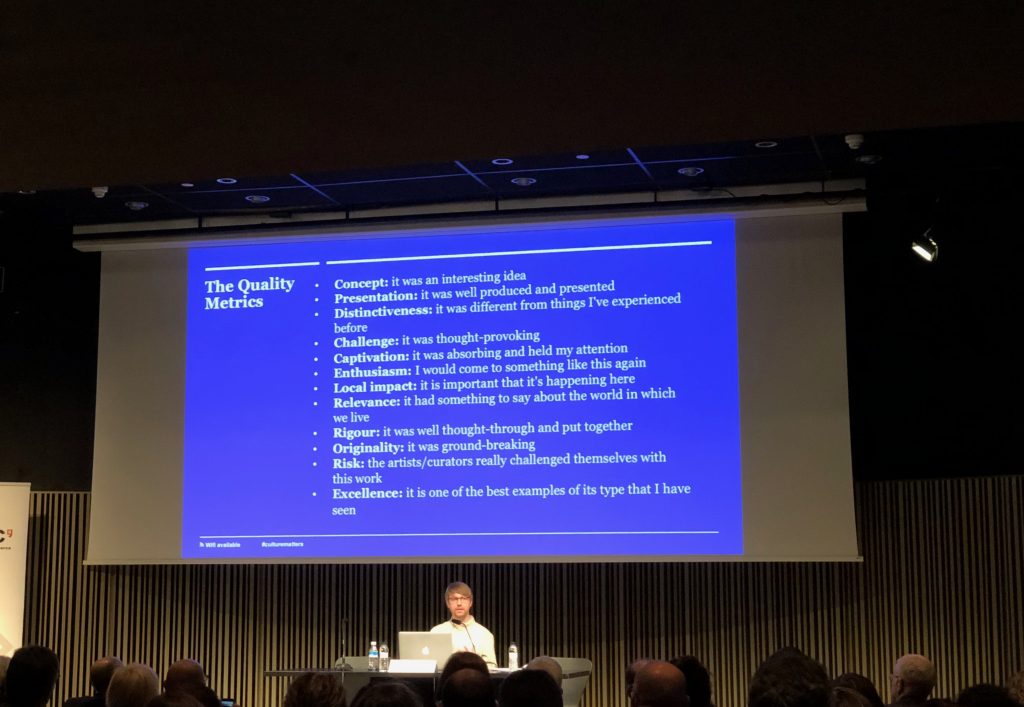On 16 October 2018 I participated in a seminar on the measurement of quality in museums, organised by the Observatori dels Públics del Patrimoni Cultural de Catalunya, OPPCC.
It made me remind the importance of quality assurance in any institution and company and the little we actually talk about it with respect to museums.
Quality assurance in museums has, roughly, three different aspects:
– quality of user experience
– quality of museum management
– total quality management
With many museums very much focused on the sheer number of visitors, the introduction of a system to measure the quality of their visit is indeed an important first step.
To do so, the Arts Council England has developed a Quality Metrics pilot. The quality of an exhibition is measured by the ones who create (museum staff) and the ones who consume it (visitors). Adding to this, they have set up peer reviews. Great! But far from being new. Years ago, when I worked as a Programme Manager at European University Association (EUA), we dealt a lot with concepts such as peer reviews, quality assurance, institutional evaluation etc. and they seemed much assumed by the university world. EUA’s Institutional Evaluation Programme, based on self-evaluations and peer reviews, is still successfully running.

Carl Stevens from the ACE with the quality metrics